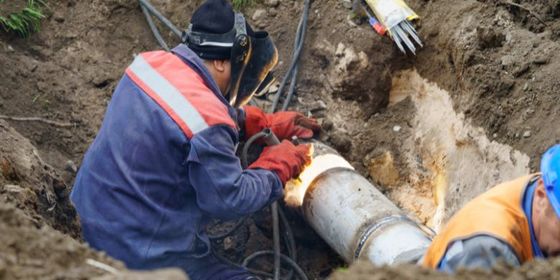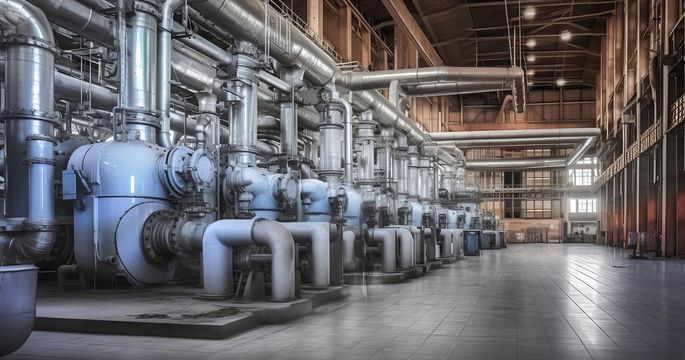Exterior improvements are a vital aspect of any construction project, ensuring that the site is not only functional and safe but also visually appealing. One of the primary resources to guide the construction industry in managing exterior improvements is the Construction Specifications Institute (CSI) Division 32.
In this blog post, we will delve into the world of exterior improvements, as defined by CSI Division 32, and explore the modern trends and technologies shaping these essential aspects of construction projects. Get ready to embark on a journey through the various categories of exterior improvements, including site preparation, landscaping, fencing and gates, retaining walls, exterior walkways, and exterior lighting and signage.
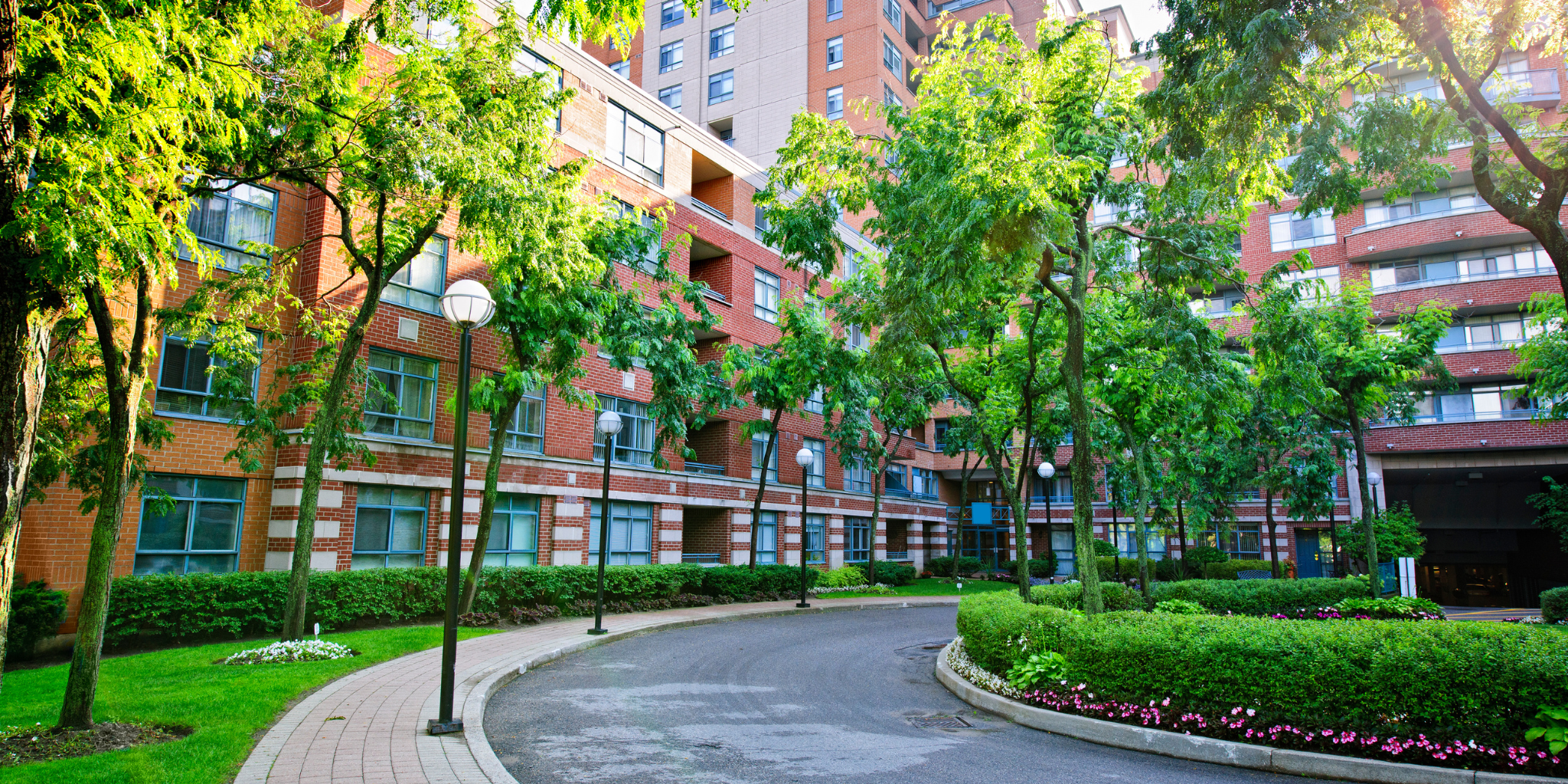
In each section, we will examine the significance, materials, designs, and technologies that are transforming these critical elements in the construction industry. By the end of this blog post, you will have a comprehensive understanding of CSI Division 32 and its critical role in shaping the exterior improvements landscape. You will also be familiar with the modern trends and technologies influencing this sector, empowering you to integrate them into your construction projects and meet today’s stringent standards and requirements. So, tighten your hard hat and join me as we embark on this fascinating expedition into the realm of exterior improvements, as guided by CSI Division 32.
Whether you are a seasoned professional or a novice enthusiast, this blog post will keep you engaged, informed, and ready to tackle your next construction project with confidence, armed with the latest knowledge in exterior improvements. Stay tuned for Section 1, where we will introduce you to the world of CSI Division 32 and its significance in the construction industry.
Suggested Posts:
Introduction to CSI MasterFormat and Division 01
Getting to Grips with CSI Division 02 – Existing Conditions in Construction Projects
Mastering Division 09 – Finishes in the CSI MasterFormat System for Improved Project Success
Understanding CSI MasterFormat: Division 14- Conveying Equipment
Master the Art of Utilities Construction with CSI Division 33
Division 48 – A Comprehensive Guide to Electrical Power Generation in Construction
Introduction to CSI Division 32 – Exterior Improvements
Welcome to the fascinating world of construction specifications, where every detail matters! In this blog, we will take a deep dive into the realm of Exterior Improvements, as covered by the Construction Specifications Institute (CSI) Division 32. Exterior improvements play a crucial role in not only enhancing the aesthetic appeal of a building but also ensuring its safety, security, and sustainability. In this ever-evolving field, modern trends like mobile app access, face unlock, video intercom, and cloud access control systems continue to make a significant impact on contemporary constructions. So, sit back, relax, and let us embark on this exciting journey together!

What is CSI Division 32
CSI Division 32 is a comprehensive classification system for exterior improvements in construction projects. It forms an integral part of the MasterFormat – a standard for organizing specifications and other written information in the construction industry. Division 32 covers a wide range of components, from site preparation and landscaping to retaining walls and exterior walkways. By adhering to the guidelines laid down by CSI Division 32, construction professionals can ensure that their projects meet the highest standards of quality and functionality.
Key Components of Division 32
Some of the most common categories covered under Division 32 include:
1. Site Preparation: This involves activities like grading, soil stabilization, and erosion control, which are essential for creating a solid foundation for construction projects.
2. Fencing and Gates: An important aspect of exterior improvements, these contribute to security, privacy, and aesthetic appeal.
3. Retaining Walls: These structures help control soil erosion, provide structural support, and enhance the overall aesthetics of a site.
4. Exterior Walkways: These pathways offer accessibility, durability, and visual appeal, connecting different areas of a construction project seamlessly.
5. Landscaping: Elements like planting, irrigation systems, and stormwater management ensure an environmentally sustainable and aesthetically pleasing construction project.
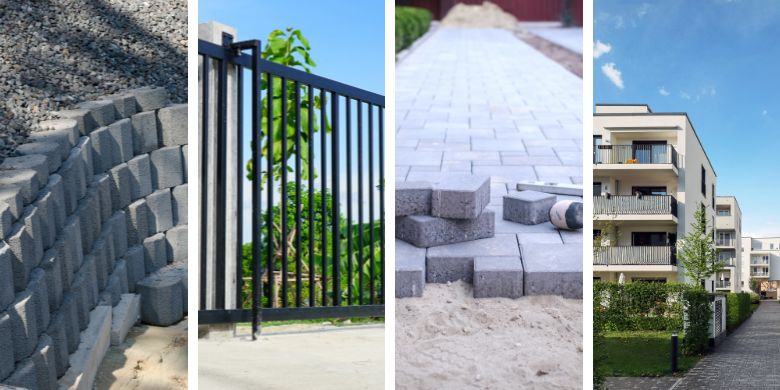
In recent years, modern trends and technologies have significantly influenced these components. For instance, mobile app access and face unlock have made securing gates and entrances more convenient and efficient, while video intercom systems have enhanced the functionality and security of exterior walkways. Stay tuned as we delve deeper into each of these categories in subsequent sections and explore the nuances of CSI Division 32. Our journey through this intriguing world of exterior improvements has just begun, and we promise you a captivating and informative ride!
Site Preparation and Landscaping
Site preparation and landscaping play a crucial role in the overall success and longevity of any construction project. In this section, we will discuss the importance of proper site preparation and landscaping in ensuring a solid foundation for construction projects and an aesthetically pleasing, environmentally sustainable outcome.
Site Preparation: Grading, Soil Stabilization, and Erosion Control
Before any construction project can begin, it is essential to prepare the site to create a stable and secure foundation. Site preparation typically involves grading – the process of leveling the land, soil stabilization – measures to strengthen the soil to support the building’s weight and erosion control – designing and implementing systems to combat erosion caused by wind, water, and human activity. Proper site preparation is critical for ensuring the longevity and stability of the construction project while minimizing potential damage from natural occurrences like floods and landslides.

Landscaping: Planting, Irrigation Systems, and Stormwater Management
Once the site is prepared, landscaping becomes a primary focus for exterior improvements. This includes planting trees, shrubs, and other plants to create a visually appealing and environmentally friendly space. Landscaping also involves the design and installation of irrigation systems that provide the necessary water supply for maintaining a healthy and vibrant landscape.
Stormwater management is another essential aspect of landscaping in CSI Division 32. By designing and implementing systems to capture and filter stormwater runoff, it helps prevent flooding, erosion, and water contamination, ultimately contributing to a more sustainable and environmentally friendly construction project.

Harnessing Modern Technologies for Site Preparation and Landscaping
Advancements in technology have led to more efficient and accurate methods of site preparation and landscaping. For example, GPS-guided grading equipment allows for precise land leveling, ensuring a stable foundation for construction projects. Additionally, smart irrigation systems enable more efficient water management, reducing water waste and promoting healthy plant growth.
In conclusion, proper site preparation and landscaping are pivotal components of CSI Division 32’s exterior improvements. Incorporating modern technology and practices in these processes ensures a stable foundation for construction projects and enhances the overall visual appeal and environmental sustainability of the completed project. Stay tuned for our next section, where we will delve into the world of fencing and gates and explore their significance in providing security, privacy, and aesthetic value to construction projects.
Fencing and Gates
In this section, we will delve into the world of fencing and gates, which form an integral part of exterior improvements in CSI Division 32. By examining various materials, styles, and finishes available, as well as the latest trends in fencing and gate technologies, we aim to emphasize the importance of selecting the right fencing and gates to provide security, privacy, and aesthetic appeal to a construction project.
Types of Fencing Materials
There is a wide range of fencing materials available in the market, each offering its unique benefits and characteristics. Some of the most popular materials include:
Wood: Known for its natural beauty and versatility, wood fences are available in numerous styles, such as picket, privacy, and split-rail. They can be stained or painted to match the desired aesthetic.
Vinyl: This low-maintenance material is known for its durability and resistance to weathering. Available in various styles and colors, vinyl fences also offer a clean and modern look.
Chain Link: Economical and functional, chain link fences are widely used for their affordability and ease of installation. They provide an excellent option for securing a property without obstructing the view.
Metal: Offering both strength and elegance, metal fencing comes in different styles, such as ornamental wrought iron, aluminum, and steel. Metal fences often feature intricate designs and offer a high level of security.
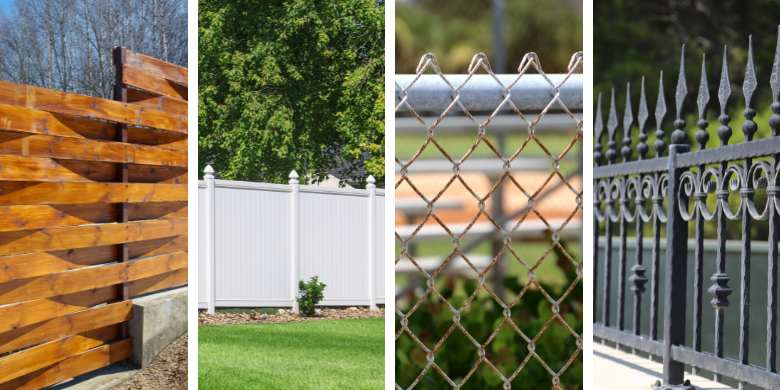
Gate Systems
When it comes to gate systems, various options cater to different requirements, such as pedestrian gates, vehicle gates, and security gates. The most popular gate types include:
- Swing Gates: Available in single or double configurations, swing gates pivot on hinge posts, and open inward or outward.
- Sliding Gates: These gates slide horizontally on a track and are ideal for properties with limited space or sloping terrain.
- Cantilever Gates: Similar to sliding gates, cantilever gates operate without the need for a ground track, making them suitable for uneven or snowy surfaces.
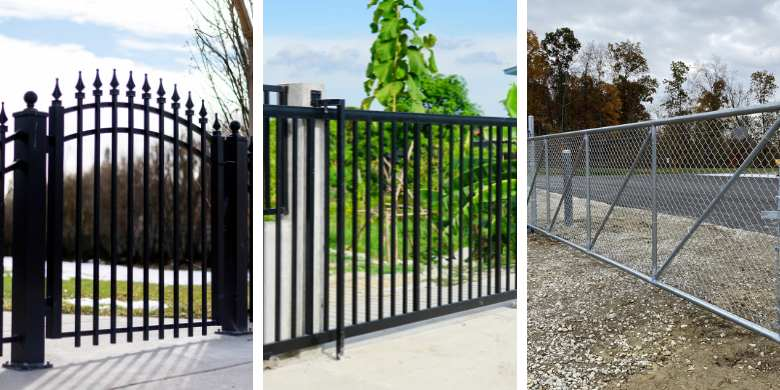
Modern Trends in Fencing and Gate Technologies
The integration of advanced technologies has revolutionized fencing and gate systems in recent years. Some notable trends include:
Mobile App Access Control: Modern gates can be equipped with access control systems that allow users to operate the gate using their smartphones. This provides added convenience and security.
Face Unlock: Utilizing facial recognition technology, this feature can be integrated into gate systems for secure and contactless access.
Cloud-based Management Systems: Property owners can remotely control and monitor their gates in real-time through cloud-based platforms, providing enhanced functionality and ease of use.

In conclusion, the selection of the right fencing and gates is crucial in ensuring the security, privacy, and aesthetic appeal of a construction project. By staying updated on the latest trends and technologies in CSI Division 32, builders and designers can make informed decisions and create exterior improvements that meet contemporary standards and requirements.
Retaining Walls and Exterior Walkways
In this section, we will investigate the importance of retaining walls and exterior walkways in enhancing the overall appeal and functionality of exterior improvements. Retaining walls and walkways are not just about aesthetics, but they play a critical role in ensuring the structural safety and accessibility of a construction project.
Retaining Walls: An Essential Component for Structural Stability
Retaining walls come in various types, including gravity, cantilever, and segmental retaining walls. These structures serve several crucial purposes in construction projects, such as:
– Soil erosion control: Retaining walls help prevent soil from washing away, especially in sloped areas, thereby maintaining the landscape’s structural integrity.
– Structural support: They provide necessary support to the soil and ensure the stability of construction projects.
– Aesthetics: Retaining walls can enhance the appearance of a site by establishing level surfaces and creating terraced landscaping elements.
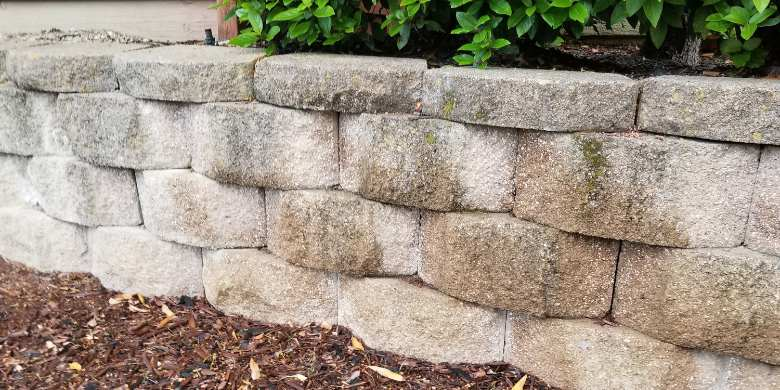
When selecting the material for a retaining wall, it is essential to consider factors like a project’s budget, aesthetics, and desired wall performance. Some popular materials used for retaining walls include concrete, stone, brick, and timber.
Exterior Walkways: Ensuring Accessibility and Aesthetic Appeal
Exterior walkways are vital in guiding pedestrian traffic and providing accessibility to various parts of a construction project. They come in a variety of materials, such as concrete, brick, stone, and asphalt, which offer different visual effects and levels of durability. Proper design, installation, and maintenance of exterior walkways are crucial to ensure the safety and longevity of these structures.
When planning a walkway, consider factors like slope, pedestrian traffic volume, and ADA (Americans with Disabilities Act) compliance. Incorporating modern technology in exterior walkways can significantly enhance their functionality and security. For instance, video intercom systems enable remote visual and audio communication with visitors, offering an added layer of security to a property.
Conclusion – Retaining walls and exterior walkways are essential components of exterior improvements under CSI Division 32. They help in controlling soil erosion, maintaining structural stability, and enhancing the overall aesthetics of construction projects. By selecting the right materials and designs, these structures will contribute to a long-lasting, accessible, and visually appealing construction project. Moreover, integrating modern technologies like video intercom systems and mobile access control can help ensure the safety and security of the entire project.
Exterior Lighting and Signage
Exterior improvements are not complete without proper lighting and signage systems. These components not only provide essential safety and visual appeal for a construction project but also contribute to energy efficiency and effective communication. In this section, we will explore the various types of exterior lighting and signage, focusing on the integration of modern trends and technologies.

Exterior Lighting: Options and Innovations
The choice of exterior lighting can make a significant impact on a project’s overall aesthetics and energy efficiency. Some popular lighting options include:
1. LED Lighting: LED lights provide energy-efficient illumination, offering high-quality light output with reduced energy consumption. They are also durable and have a longer lifespan compared to traditional lighting options.
2. Solar-Powered Lighting: By harnessing solar energy, these lighting systems offer an eco-friendly alternative that reduces reliance on non-renewable energy sources. They often come equipped with sensors to maximize energy efficiency, turning off during daylight hours and activating at night or in low-light conditions.
3. Smart Lighting Systems: These lighting solutions offer remote control and monitoring capabilities, allowing for easy adjustments and energy-saving opportunities. They can be programmed to turn on or off at specific times, respond to motion sensors, or even change color to create varying ambiances.
Incorporating these innovative lighting options can significantly enhance the safety, visual appeal, and energy efficiency of your construction project.
Exterior Signage: Materials, Design, and Installation
Exterior signage plays a vital role in communicating information, providing directions, and enhancing the visual appeal of a site. Some critical factors to consider when selecting and designing exterior signage include:
1. Materials: Signage materials must be durable, weather-resistant, and visually appealing. Popular materials include metal, acrylic, glass, and wood. The choice of material depends on the intended purpose and desired aesthetic of each sign.
2. Design: Effective signage design should balance functionality and aesthetics. The design should consider font size, colors, and graphics to ensure readability and align with the project’s overall visual theme.
3. Installation: Proper installation is crucial for long-lasting and functional exterior signage. It is essential to consider aspects such as mounting height, location, and visibility during the installation process.
Embracing Modern Trends in Exterior Lighting and Signage
Staying up to date with the latest technologies and trends in exterior lighting and signage ensures that your construction projects remain relevant and meet contemporary standards. Some of these modern trends include:
1. Sustainable solutions: The adoption of energy-efficient technologies, such as LED and solar-powered lighting, contributes to sustainable construction practices and reduces environmental impact.
2. Smart connectivity: Integrating smart lighting and signage systems that can be remotely controlled and monitored allows for efficient management and maintenance of exterior components.
3. Aesthetic appeal: Incorporating modern, visually appealing designs in both lighting and signage can enhance the overall aesthetic of the project and create a memorable experience for visitors.
In conclusion, the importance of exterior lighting and signage in CSI Division 32 cannot be overstated. By incorporating modern trends and technologies, you can ensure that your construction projects provide a safe, visually appealing, and energy-efficient environment that meets contemporary standards.
Conclusion
In conclusion, the world of exterior improvements as guided by the Construction Specifications Institute (CSI) Division 32 is vast and incredibly intricate. Every element from site preparation, landscaping, fencing and gates, retaining walls, to exterior walkways, plays a unique role in the success of a construction project. Each of these components not only contributes to the aesthetics but also ensures the functionality, safety, and sustainability of the built environment.
Remember, the key to successful exterior improvements lies in understanding these components’ nuances and employing the best practices, designs, and technologies. By adhering to the guidelines of CSI Division 32, construction professionals can ensure their projects not only meet the highest standards of quality and functionality but also address today’s stringent standards and requirements. As we continue to see advancements in technology and shifts in design trends, CSI Division 32 will undoubtedly continue to evolve, shaping the future of exterior improvements in the construction industry.
Have Questions?
Get in touch with our team to learn more about what Swiftlane can do for you.


